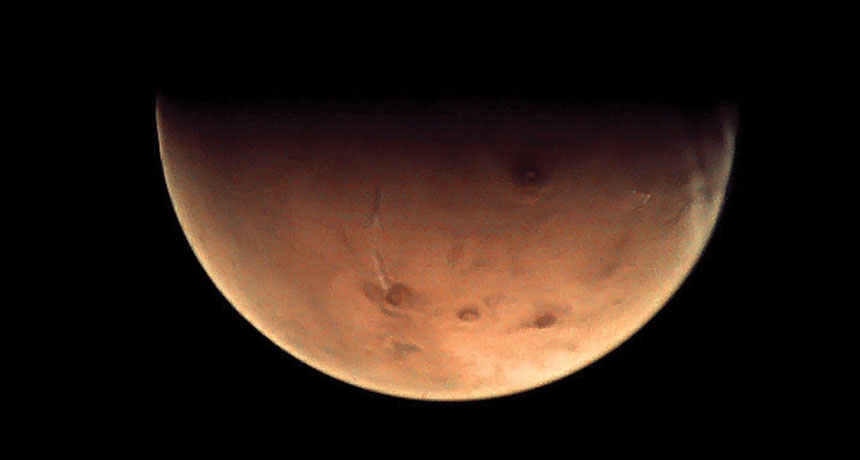Methane found in meteorites from Mars
Gas could nourish life deep underneath Red Planet’s surface

MARS, METEORITES AND METHANE, OH MY Meteorites from Mars (seen in this image from the Mars Express orbiter) contain copious amounts of methane, which could nourish subsurface microbial life.
ESA







